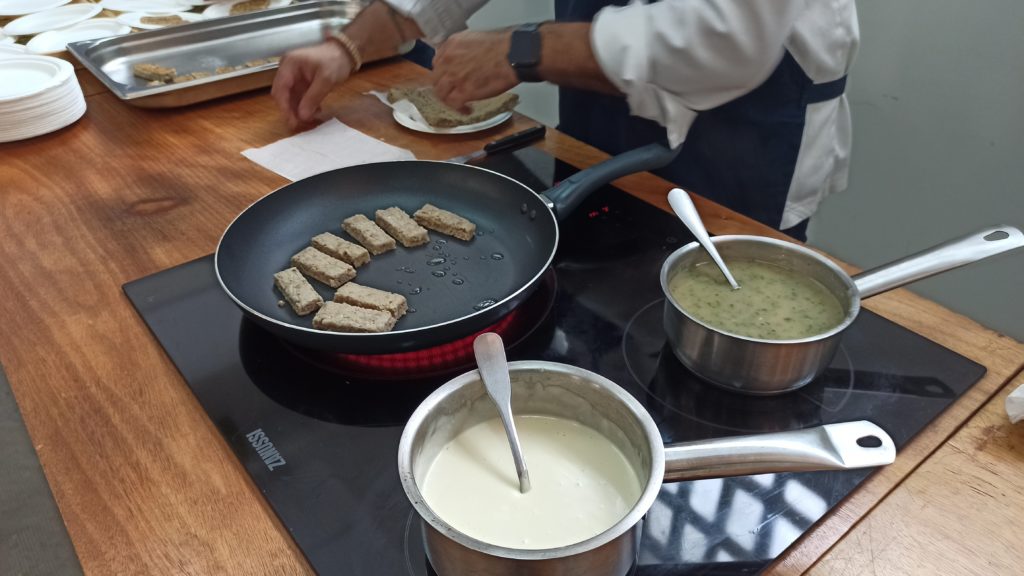Last 19th October, the SEAFOOD-AGE Final Conference took place at Pazo Los Escudos in Vigo.

Eva Balsa-Canto introduced the project to the 64 attendees who came that day.

The first speech was presented by Xosé Antón Vázquez, from the IIM-CSIC.
He explained the sustainable production of ingredients from marine resources.

Then, Rogerio Mendes (IPMA) presented the bioactivities of the ingredientes used in the project for the production of our RTE seafood.

Carmen G. Sotelo took the floor to present the formulation of the RTE seafood product.

Ina Bremenkamp (UCC) talked about the design and formulation of eco-packaging solutions for our RTE seafood product.

Marta López-Cabo presented their results obtained in their studies about quality and microbial safety in RTE seafood products.


Carmen Sotelo showed how to use DNA techniques to identify the ingredients of ready to eat food products in benefit of accurate labels.
Harri Määttä explained how to use printed electronics to develop a smart predictive label.

To finish the Technical session, Eva Balsa-Canto presented how to use predictive models to improve food quality and safety in our Smart predictive label.

In the afternoon, Juan Martín Fragueiro (OPROMAR) talked about the industrial approximation to the valorization of fish discards.

Julie Maguire from Indigo Rock Marine Research Station, Ireland presented seaweed value chains in Europe.

Manuel López, from NOTPLA, explained how their Ooho is a biodegradable solution to replace single-use plastics.

Alex Garrido-Maestu (INL) presented a ready-to-use kit for listeria dection with excelent detection capabilities.

The Industrial session finished with the copresentation of the functioning of Smart predictive labels in the real-world practice by Harri Määttä (Oamk) Finland and Eva Balsa-Canto (IIM-CSIC)
The Conference closed with a showcase of the products developed by the project:
- Seaweed-based packaging for sauces
Manuel López Romero, NOTPLA - Real-time demonstration of the smart predictive label
Harri Määttä, Oamk and Eva Balsa-Canto, IIM-CSIC - Ready-to-eat seafood prepared by BENBOA
Paco Teira, BENBOA



















